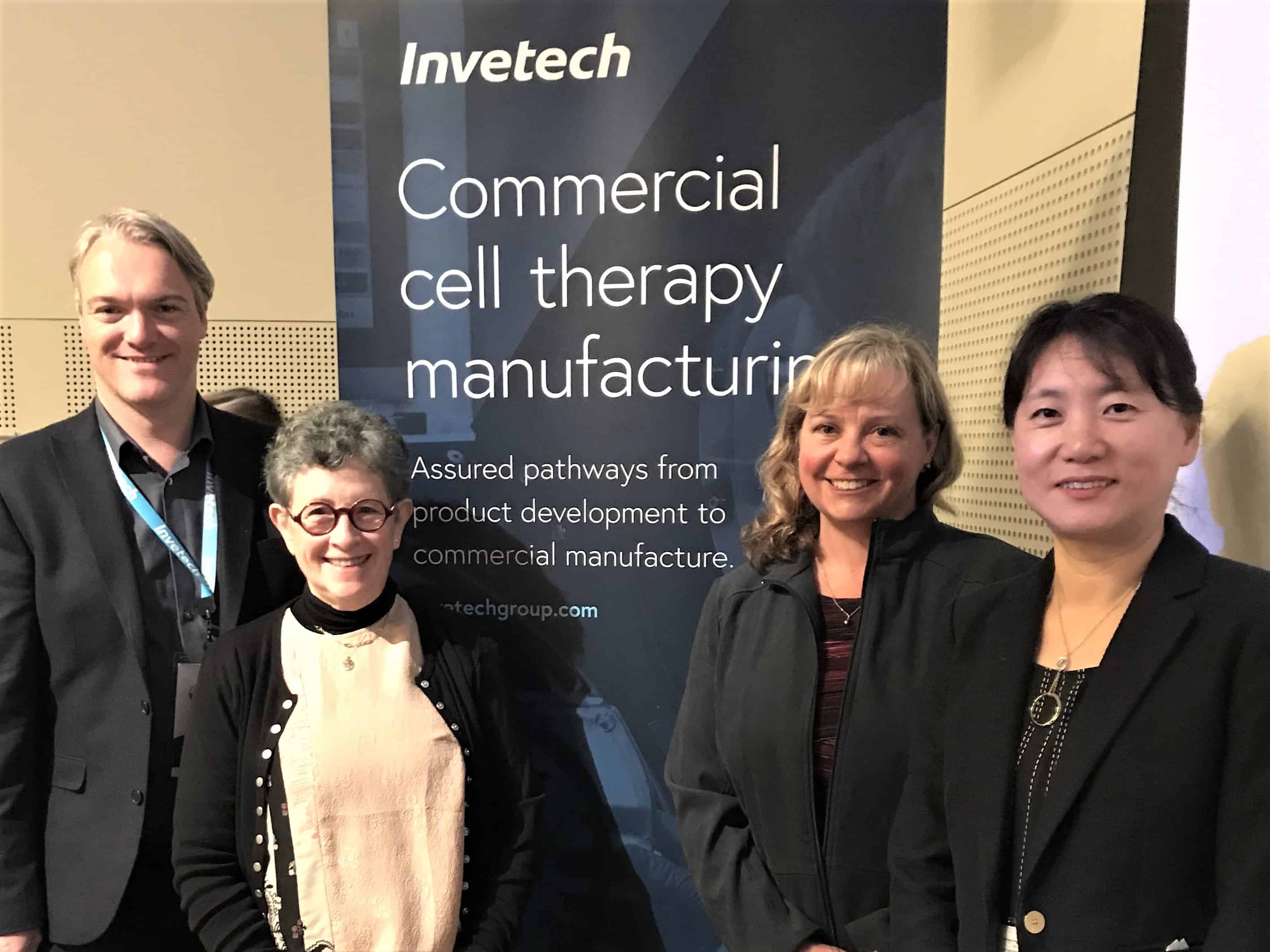The emergence of commercially available cell therapies has been, and continues to be, an inflection point for the cell therapy industry. An initial pathway from process development to commercial manufacture has been described, yet many challenges remain along the way.
Invetech hosted a panel discussion during the recent International Society Cell & Gene Therapy (ISCT) conference in Melbourne, Australia to explore the main challenges along the pathway from process development to commercial cell therapies.
The panel, chaired by Invetech’s Jon Ellis, and comprising of Dr. Dawn Driscoll (Cell Therapies Pty Ltd), Dr. Joanne Kurtzberg (Duke University) and Dr. Wen Bo Wang (Fate Therapeutics) had an insightful discussion on the role that considered automation plays in navigating three of the biggest potholes in commercial cell therapies:
- Productivity of human resources
- Consistency of manufacturing
- Access to capital
You can watch a recording of the full discussion here or continue reading for some of the key highlights.

 Dawn Driscoll is the CEO of Cell Therapies. Dawn has over 20 years of experience in the biotechnology industry globally, with expertise in cell therapy, licensing, acquisitions and commercialisation. Dawn has previously managed global technical teams in clinical development, regulatory affairs, marketing and pharmaceutical product launches. Dawn has held senior roles in Johnson & Johnson, Wyeth (Pfizer) Pharmaceuticals, and managed DCi Biotech, an international consultancy focused exclusively on the commercialisation of cell & gene therapies, for over 10 years.
Dawn Driscoll is the CEO of Cell Therapies. Dawn has over 20 years of experience in the biotechnology industry globally, with expertise in cell therapy, licensing, acquisitions and commercialisation. Dawn has previously managed global technical teams in clinical development, regulatory affairs, marketing and pharmaceutical product launches. Dawn has held senior roles in Johnson & Johnson, Wyeth (Pfizer) Pharmaceuticals, and managed DCi Biotech, an international consultancy focused exclusively on the commercialisation of cell & gene therapies, for over 10 years. Dr. Joanne Kurtzberg is an internationally renowned expert in pediatric hematology/oncology, pediatric blood and marrow transplantation, umbilical cord blood banking and transplantation, and novel applications of cord blood in the emerging fields of cellular therapies and regenerative medicine. Dr. Kurtzberg pioneered the use of umbilical cord blood as an alternative stem cell source for unrelated hematopoietic stem cell transplantation (HSCT). Over the last two decades Dr. Kurtzberg has established an internationally known pediatric transplant program at Duke which treats children with cancer, blood disorders, immune deficiencies, hemoglobinopathies and inherited metabolic diseases. In 2012, under the direction of Dr. Kurtzberg, the Carolinas Cord Blood Bank received FDA approval for DuCord, a stem cell product derived from umbilical cord blood, for use in transplants between unrelated donors and recipients. Dr. Kurtzberg currently holds several INDs for investigational clinical trials.
Dr. Joanne Kurtzberg is an internationally renowned expert in pediatric hematology/oncology, pediatric blood and marrow transplantation, umbilical cord blood banking and transplantation, and novel applications of cord blood in the emerging fields of cellular therapies and regenerative medicine. Dr. Kurtzberg pioneered the use of umbilical cord blood as an alternative stem cell source for unrelated hematopoietic stem cell transplantation (HSCT). Over the last two decades Dr. Kurtzberg has established an internationally known pediatric transplant program at Duke which treats children with cancer, blood disorders, immune deficiencies, hemoglobinopathies and inherited metabolic diseases. In 2012, under the direction of Dr. Kurtzberg, the Carolinas Cord Blood Bank received FDA approval for DuCord, a stem cell product derived from umbilical cord blood, for use in transplants between unrelated donors and recipients. Dr. Kurtzberg currently holds several INDs for investigational clinical trials. Dr. Wen Bo Wang is Senior Vice President, Technical Operations at Fate Therapeutics, overseeing the company’s manufacturing strategies for its pipeline of off-the-shelf cell-based cancer immunotherapy candidates and scaling the Company’s induced pluripotent stem cell iPSC platform to support late-stage clinical and commercial operations. She was formerly Senior Vice President Cell Therapy R&D at Fujifilm Cellular Dynamics Inc (FCDI), where she was responsible for developing the cell therapy R&D strategy and the iPSC based pipeline products and led the next generation production technology development efforts. Previously, she was VP Process Sciences, and directed scale up and scale out platform process development for iPSC based iCell products and MyCell products including automation and bioreactor work.
Dr. Wen Bo Wang is Senior Vice President, Technical Operations at Fate Therapeutics, overseeing the company’s manufacturing strategies for its pipeline of off-the-shelf cell-based cancer immunotherapy candidates and scaling the Company’s induced pluripotent stem cell iPSC platform to support late-stage clinical and commercial operations. She was formerly Senior Vice President Cell Therapy R&D at Fujifilm Cellular Dynamics Inc (FCDI), where she was responsible for developing the cell therapy R&D strategy and the iPSC based pipeline products and led the next generation production technology development efforts. Previously, she was VP Process Sciences, and directed scale up and scale out platform process development for iPSC based iCell products and MyCell products including automation and bioreactor work.